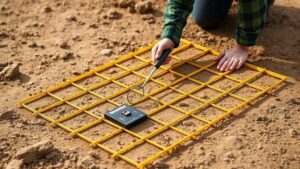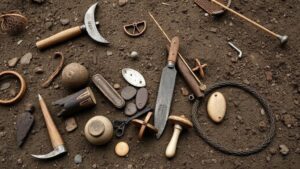Detecting for Gold Coins Along Historic Gold Rush Trails
Detecting for Gold Coins Along Historic Gold Rush Trails
The Gold Rush era, primarily between 1848 and 1855, catalyzed an influx of fortune seekers into North America, particularly California and parts of the Western United States. This convergence of people and their relentless quest for wealth has left behind a rich tapestry of history, intrigue, and the potential for modern treasure hunters equipped with metal detectors to find gold coins along these historic trails. Understanding how to effectively detect gold coins along these paths requires a blend of historical knowledge, technological insight, and practical methodology.
The Historical Context of Gold Rush Trails
The Gold Rush began with James Marshalls 1848 discovery of gold at Sutters Mill, instigating an unprecedented migration known as the 49ers. Thousands traversed arduous routes, such as the Oregon Trail and the Sierra Nevadas challenging passes, to seek their fortunes. Campgrounds, trading posts, and makeshift settlements sprung up, creating a network of trails that remain significant today.
For modern treasure hunters, the remnants of these trails represent not just a historical journey but a tangible opportunity to uncover lost wealth. Throughout these routes, loss or abandonment of gold coins was commonplace due to theft, carelessness, or unforeseen events like natural disasters.
Understanding the Geology and Soil Composition
Success in detecting for gold coins relies heavily on geological understanding. Gold typically deposits in alluvial soils or alongside riverbeds where it was washed downstream. So, areas near historical rivers, streams, and creeks must be prioritized. For example, the American River in California, which was central during the Gold Rush, remains fruitful for prospectors. soil composition in these areas can dictate the usability of different types of metal detectors.
- Alluvial gravels are often ideal sites for finding gold due to historical deposits.
- Highly mineralized soils may require specialized detectors to differentiate between metals.
Choosing the Right Equipment
Choosing the appropriate metal detector is crucial for successful gold coin detecting. Factors to consider include frequency, weight, sensitivity, and discrimination capability. Generally, gold detectors with frequencies between 10 kHz to 20 kHz are excellent for gold recovery due to their sensitivity. Modern detectors commonly used include:
- Minelab GPZ 7000, renowned for its extreme sensitivity to small gold nuggets.
- Garrett AT Gold, which balances depth and sensitivity in mineralized soils.
Also, using accessories like digging tools, headphones, and sand scoops can further enhance your efficiency and comfort during searches.
Researching Historical Locations
Prior to embarking on a detecting expedition, thorough research is vital. Key aspects of historical gold rush sites include:
- Understanding migration patterns and settlement locations.
- Identifying historical maps that document gold discovery camps and trade routes.
Resources such as the Library of Congress or local historical societies provide access to these documents, which can drastically improve your chances of finding valuable coins. For example, the town of Coloma, California, where Sutters Mill is located, has documented countless finds of both coinage and jewelry that date back to the Gold Rush era.
Legal Considerations and Responsible Detecting
Before commencing your search for gold coins, its imperative to understand the legal requirements associated with metal detecting. Local laws vary significantly; some areas may require permits while others prohibit detecting entirely. National parks, for example, are largely off-limits. Always secure permissions for private property and consult the Bureau of Land Management and local ordinances concerning metal detecting to avoid legal issues.
Equally, practicing responsible detecting is essential. Treasure hunters should adhere to “Leave No Trace” principles, ensuring that their activities do not harm the environment nor disturb historical sites. If a find is deemed to be of archaeological significance, it should be reported to the relevant authorities.
Real-World Applications and Success Stories
Numerous real-world examples illustrate the potential of detecting along historic Gold Rush trails. One notable instance occurred in 2014 when a metal detectorist discovered a trove of gold coins in a sunken cabin near a former mining camp in Nevada County, California. cache included several pieces minted during the 1849 California Gold Rush, recently valued at over $100,000.
Another notable success story happened in 2017 in the Russian River region, where a detectorist unearthed a gold coin minted in 1850, confirming the historical significance of the area. Such findings reaffirm that both historical understanding and modern technology can yield impressive results when combined effectively.
Conclusion
Detecting for gold coins along historic gold rush trails presents a unique blend of adventure, history, and the potential for financial reward. By choosing the right equipment, conducting thorough research, and adhering to legal and ethical standards, treasure hunters can enhance their chances of uncovering pieces of history still waiting to be found. Embrace the journey and the stories these coins can tell, which continue to resonate even over a century later.
As you prepare to embark on your own treasure-hunting expedition, remember that every coin found is not just a monetary gain but a tangible connection to the past.


